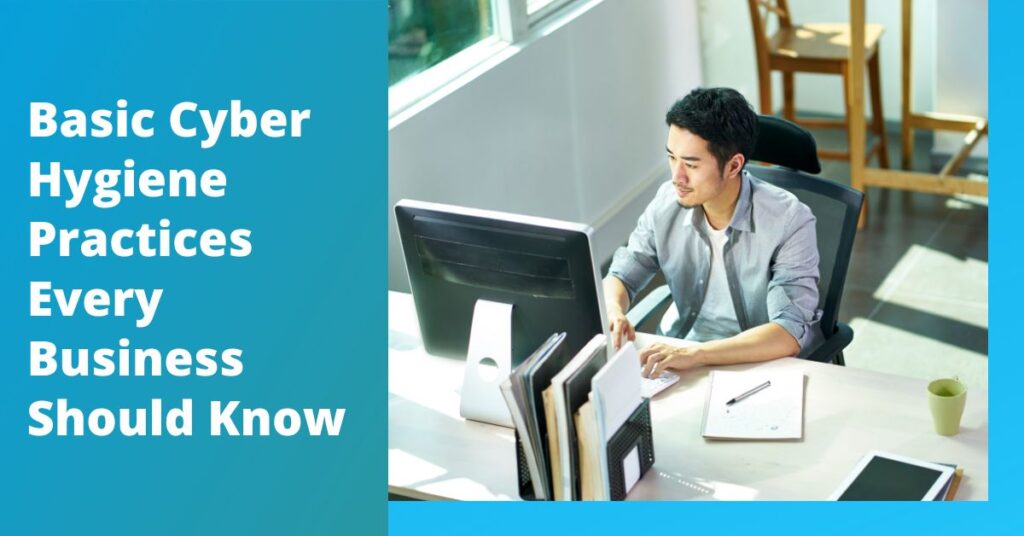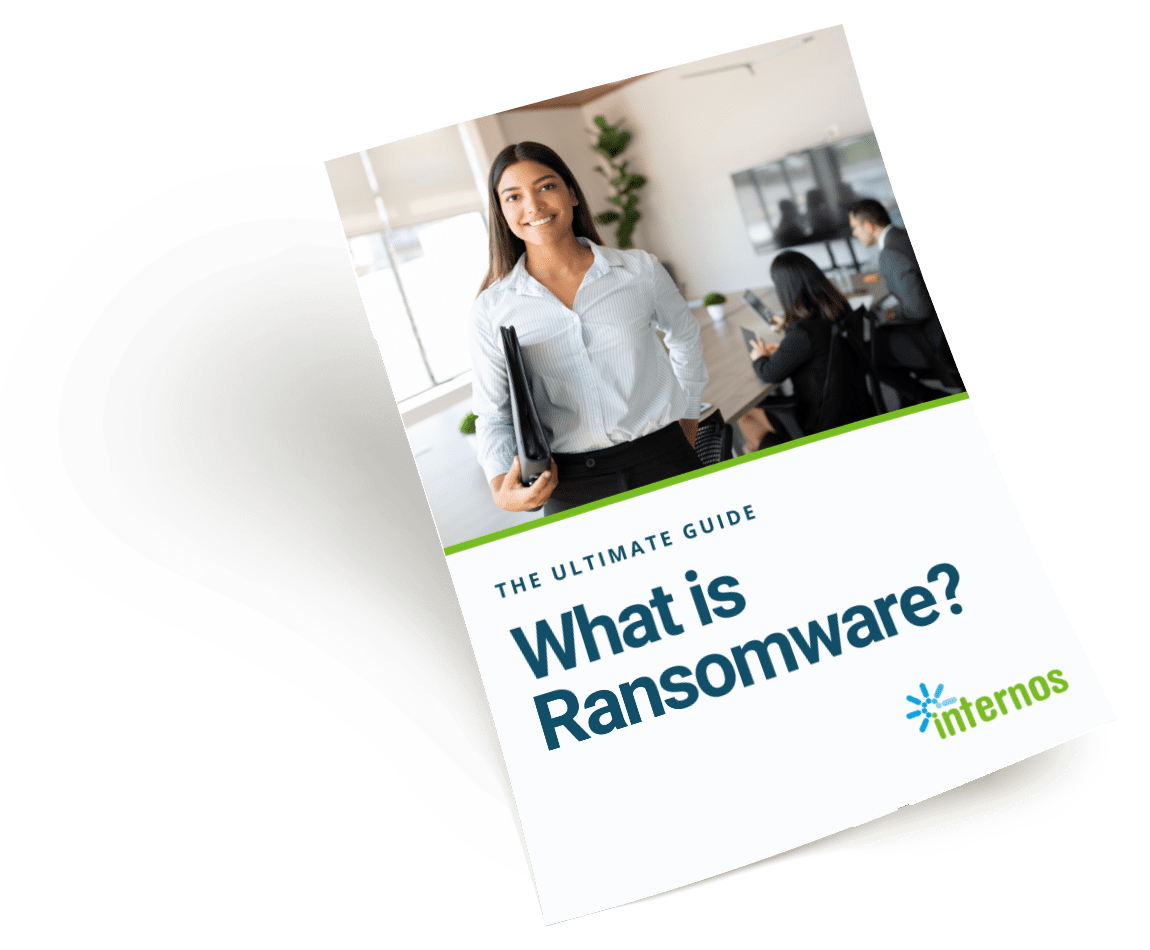
Cyber hygiene is the foundation of a healthy, secure digital environment. Just like washing your hands helps prevent illness, practicing basic cyber hygiene helps maintain cybersecurity. Yet, many organizations struggle to understand what “good hygiene” actually looks like online. It doesn’t require advanced tech skills: just consistent, mindful habits. Whether you’re running a small local shop or managing a large team, building a routine of basic cyber hygiene practices can make a big difference.
What Is Cyber Hygiene?
What exactly is cyber hygiene? Well, it’s exactly what it sounds like. Think of it the same way you think about personal hygiene. Brushing your teeth, showering, washing your hands… these are all routine habits that keep your body healthy. Cyber hygiene is the same idea — just applied to your technology. It’s the regular practices you follow to keep your devices, accounts and data clean, protected and running smoothly.
Why Basic Cyber Hygiene Is Important
Implementing basic cyber hygiene is essential. It protects your technology from cyber threats. Just like germs can make you sick, viruses and malware can infect your devices and steal sensitive information. Practicing good cyber hygiene helps prevent these attacks before they happen. It’s one of the simplest ways to safeguard your data, protect your customers and keep your business running smoothly.
Password Hygiene
One of the most important aspects of basic cyber hygiene is creating strong, secure passwords and managing them safely. Weak or reused passwords are one of the easiest ways for cyber criminals to gain access to your accounts.
Here are some tips for creating the safest passwords:
Never Reuse Passwords
Reusing the same password for multiple accounts is one of the worst things you can do. If one account gets compromised, hackers can use that same password to access your other accounts.
Make Them Long
Don’t just settle for the minimum character requirement — go above and beyond. The longer the password, the harder it is to crack. Consider basing your password on a full sentence, like “My dog is my best friend!” Just make sure it’s something memorable to you but hard for others to guess.
Use a Mix of Characters
It’s always better to use a combination of uppercase and lowercase letters, numbers and special characters. This makes your password much harder to crack. For example, “Myd0gismyb3stfr!end!” is way stronger than the same phrase without the mix — and still easy to remember!
Consider a Password Manager
Storing your passwords safely is just as important as creating strong ones. Writing them down or saving them in a notes app leaves your accounts vulnerable. A password manager securely stores all your login credentials in one place and can even generate strong, unique passwords for each account. It’s a simple tool that adds a powerful layer of protection.
What Is Two-Factor Authentication and How Does it Work?
Two-factor authentication (2FA) is an extra layer of security used to make sure that people trying to gain access to an account are who they say they are. 2FA is an excellent way to strengthen your cybersecurity and protect your accounts from unwanted visitors. Here’s how it works:
What Is 2FA?
Instead of relying on just a password, 2FA (or MFA) requires a second form of verification: something only you have. That extra step makes it much harder for cyber criminals to break in, even if they manage to steal your password.
How Does it Work?
The first step is to simply log in to your account with your username and password. You will then be prompted to verify your identity through one of these methods:
- A text message or email code
- A push notification from an authenticator app
- A fingerprint, face scan or security key
Even if someone knows your password, they won’t get in without that second factor. It’s quick, easy and seriously boosts your account security.
Backing up Your Data
Backing up your data is like making copies of your important documents. In case of an unexpected disaster — whether it’s a cyber attack, system failure or human error — you won’t lose everything. Backups ensure you can recover your data and continue business as usual.
Backing up your data regularly helps protect your business against:
- Ransomware: Ransomware attacks can lock up your files and demand payment for their release. Regular backups ensure that even if your files are compromised, you can restore them without paying the ransom.
- System failures: Hardware can fail at any time. Whether it’s a malfunctioning hard drive, power surge or software crash, backing up your data regularly reduces the risk of permanent data loss.
- Accidents: We all make mistakes. Accidental deletions, overwriting important files or human errors can happen. With backups, you can easily recover lost data and prevent downtime.
Use the 3-2-1 Rule
The 3-2-1 rule is a simple yet highly effective backup strategy to ensure your data is safe from every angle:
- 3 copies of your data: One primary copy and two backups.
- 2 different types of storage: For example, an external hard drive and cloud storage.
- 1 copy off-site: Keep one backup in a location separate from your physical office, either in the cloud or in an off-site storage facility.
Following this rule protects your data against both local failures (like hardware malfunctions) and regional disasters (like fire or theft).
Regularly Updating Software
Keeping your software up to date is a crucial aspect of maintaining good cyber hygiene. Software updates are released for a reason: They fix bugs, improve performance and, most importantly, patch security vulnerabilities. Cybercriminals often target outdated software, taking advantage of weaknesses that have already been addressed in newer versions.
Regular updates help protect your devices and data from potential threats.
Why software updates are essential:
- Security fixes: Updates often include security patches that close vulnerabilities hackers might exploit. Running outdated software leaves your business open to attacks.
- Improved functionality: Software updates can improve performance, fix bugs and add new features that enhance user experience.
- Compliance: Some industries require specific software versions to remain compliant with regulatory standards. Regular updates help ensure your business stays on track.
Best Practices for Updating Software:
- Enable automatic updates: Whenever possible, turn on automatic updates to ensure your software stays up to date without requiring manual intervention.
- Schedule regular updates: If automatic updates aren’t an option, set aside time to manually check for updates regularly.
- Keep everything updated: Don’t just focus on operating systems. Update apps, plugins and security software as well to ensure complete protection
Review Your Privacy Settings
You should review your privacy settings regularly to protect your information. Schedule a reminder every few months to check your settings and ensure they are up to date. Don’t forget about old or unused accounts; close them if you’re no longer using them. Also, be mindful of what you share online: the less personal information you disclose, the safer you’ll be.
Know How to Identify Scams
Scams are everywhere — whether it’s in the form of phishing emails, fraudulent phone calls or fake websites. Cybercriminals use deceptive tactics to trick you into revealing sensitive information like login credentials, credit card numbers or personal identification. Recognizing scams is a key part of maintaining strong cyber hygiene and protecting your business and personal information.
How to identify scams:
Look for Red Flags in Emails
Phishing emails often try to create a sense of urgency or fear. Common tactics include:
- Asking for immediate action, like clicking a link or providing sensitive information.
- Using generic greetings like “Dear Customer” instead of your name.
- Offering too-good-to-be-true deals or prizes.
Tip: Always verify the sender’s email address before clicking any links or downloading attachments.
Check for Suspicious Website URLs
Scam websites often mimic legitimate ones to steal your information. Be sure to check:
- The URL: A real site will have “https://” and a padlock icon in the address bar, while fraudulent sites may have misspellings or strange domain extensions.
- Website layout: Scammers may create low-quality websites that look unprofessional or contain broken links.
Tip: If in doubt, always navigate to the website manually by typing in the official URL in your browser rather than clicking on a link.
Be Wary of Unsolicited Phone Calls
Scammers often impersonate trusted organizations or government agencies to get you to reveal personal information. Red flags include:
- Requests for immediate payment or account verification over the phone.
- Calls from unknown numbers or unfamiliar area codes.
- Threatening language or offers that seem too good to be true.
Tip: Never provide personal information over the phone unless you’re sure the call is legitimate. Hang up and call the organization’s official contact number.
Be Wary of Public Wi-Fi
Public Wi-Fi might seem convenient, but it’s often insecure. Cybercriminals can easily intercept data on unprotected networks, putting your sensitive information at risk. Avoid accessing important accounts, like banking or email, when connected to public Wi-Fi. If you must use it, consider using a virtual private network (VPN) to encrypt your internet connection and protect your data.
Teach Everyone You Know About Cybersecurity
Cybersecurity isn’t just for managers and office workers; it’s for everyone, including your family and friends. The more people who understand basic cyber hygiene, the safer everyone becomes. Take it upon yourself to share what you’ve learned. Help your coworkers set up strong passwords, teach your family members about online scams and encourage your friends to update their devices regularly. Cybersecurity is a team effort, and it starts with spreading awareness.
Optimize Your Cyber Hygiene With Internos Group
At Internos Group, we understand the importance of strong cyber hygiene. Our experts can optimize your organization’s cybersecurity with tailored solutions. We’ll ensure your systems are protected, up to date and fully optimized, so you can focus on growing your business with confidence. Let us help you maintain a healthy, secure digital environment and keep cyber threats at bay.
Contact us or book a meeting today to learn how we can help you level up your cyber hygiene.

